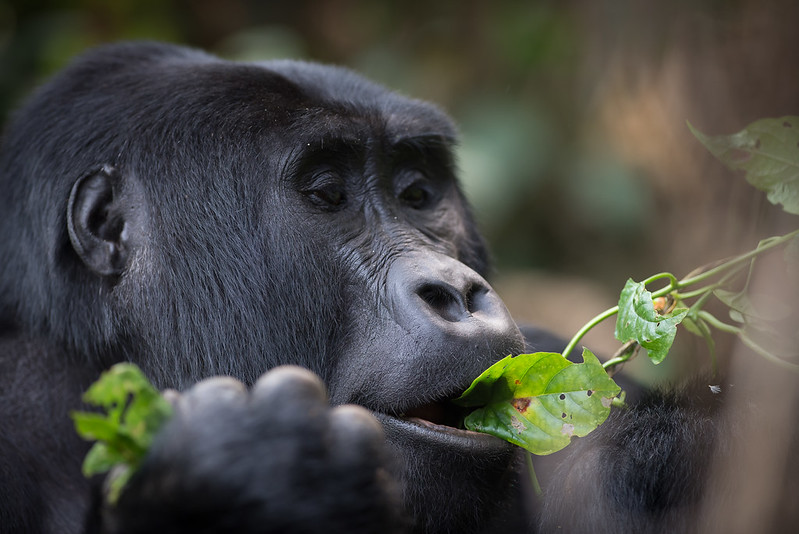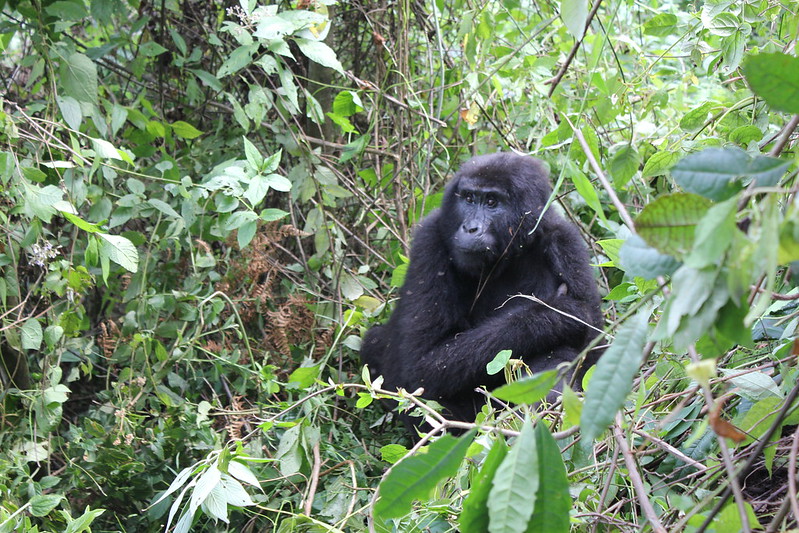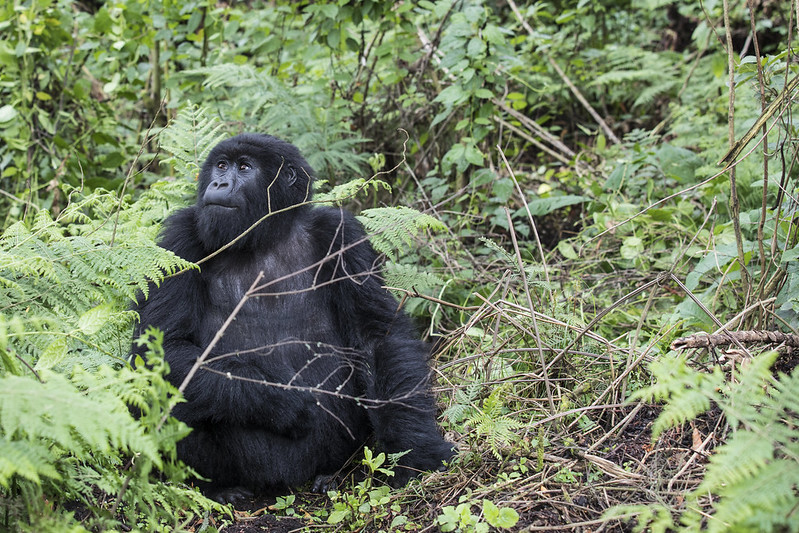
Nshongi Gorilla Group In Rushaga
Nshongi Gorilla Group In Rushaga.
Everything You Should Know About the Nshongi Gorilla Group in Rushaga The Nshongi Gorilla Group is one of the habituated gorilla populations in the Rushaga district of Uganda, which is a component of Bwindi Impenetrable National Park. One of the best places on Earth for a gorilla trekking safari experience is Bwindi Impenetrable National Park, which is home to a sizable population of mountain gorillas.
The Nshongi Gorilla Group, so named because of the Nshongi River, was once the most habituated gorilla group in Bwindi, with a vast population. The number of people in the group may change over time due to births, deaths, and group dynamics, so it’s a good idea to check the most recent information with park officials or a tour operator when planning your trip.
In Bwindi Impenetrable National Park, which contains the Rushaga region, home to the Nshongi Group, gorilla trekking offers a unique opportunity to see these incredible animals in their natural habitat. In addition to being an amazing natural experience, it is a conservation success story and aids in the protection of these endangered animals.
The Rushaga region of Bwindi Impenetrable National Park is home to the largest habituated group, the Nshongi. The southern Bwindi Impenetrable Forest National Park’s Rushaga region is home to the Nshongi gorilla family. The family’s members include Silver-back Nshongi, the leader; Blackbacks Silver-back Kakono, Kutu, Tinfayo, Munywa, Bwire, Busasa, Matama, and Bweza; adult females Shida, Bukojo, Nyampundu, and Munini; juveniles Rurehuka, Mureba, Mahoro, and Tindatine; and infants Ninsiima, Mukiza, Katoono, Kazani, Rotary, and Bwiruka.
The group’s name was inspired by the River Nshongi, which runs through the area where they were initially spotted. The word “Nshongi” comes from the native term for honey, “Omushongi Gwoboki.” Because of its honey-colored water, the river was named River Nshongi.
On September 26, 2009, the Nshongi gorilla family joyfully welcomed tourists into their home after starting the habituation process in 2007. The event, which was attended by celebrities, led to the birth of the “Friend a Gorilla” campaign.
NSHONGI: UGANDA TREKKING WITH GORILLA
However, under Silverback Mishaya’s leadership, ten of the group’s members broke away due to certain family disputes, leaving the group with just 25 members. Internal conflict caused the Nshongi gorilla family group to split even more in 2012, leading to the formation of the “Bweza gorilla family” in the Bwindi jungles.
For a multitude of causes, including the death of group members, the arrival of new members, the departure of long-term members, and many more, the numbers of these gorilla families change throughout time.
According to Uganda Park costs, gorilla tracking licenses can cost as little as $800 USD for foreign non-residents, $700 USD for foreign residents, and 300,000 Ugandan Shillings for East African Community residents as of 2024. These tracking permissions must be reserved in advance with a respectable tour operator, such “Experiya Tour Company.”
 OTHER GORILLA FAMILIES IN THE RUSHAGA REGION.
OTHER GORILLA FAMILIES IN THE RUSHAGA REGION.
Tracking this gorilla tribe will provide you with memories as sweet as honey and unique encounters. Only 35 members of the once massive Nshongi gorilla family remained by the time the family was made available for tracking on September 26, 2009.
But because of internal conflicts, 10 members of the family split out under Silverback Mishaya’s leadership, reducing the group to just 25. The name of this gorilla group comes from the River Nshongi, which encircles their natural habitat. There was a deep hue of what looked like honey in the river.
The name of the gorilla family group, Nshongi, is derived from the river Omushongi Gwoboki, which is also how the locals call the honey, because of its hue. After starting their habituation process in 2007, the Nshongi gorilla family opened their home to tourists on September 26, 2009, to much fanfare and celebrity participation. This event also marked the start of the “Friend a Gorilla” campaign.
The southern Bwindi Impenetrable Forest National Park’s Rushaga region is home to the Nshongi gorilla family. The family’s members include Silver-back Nshongi, the leader; Blackbacks Silver-back Kakono, Kutu, Tinfayo, Munywa, Bwire, Busasa, Matama, and Bweza; adult females Shida, Bukojo, Nyampundu, and Munini; juveniles Rurehuka, Mureba, Mahoro, and Tindatine; and infants Ninsiima, Mukiza, Katoono, Kazani, Rotary, and Bwiruka.
Following continuous conflicts and other factors that made some members of the Nshongi gorilla family group uncomfortable, a new group known as the “Bweza gorilla family” was established in the Bwindi woods in 2012.
Please be advised that the number of visitors allowed to visit a gorilla group and the rules governing gorilla trekking are subject to change. Therefore, before booking your trip, you must make sure you have the most up-to-date information and obtain the necessary authorizations.
Furthermore, in order to ensure a polite and secure experience for both people and gorillas, it is imperative that you follow all guidelines and instructions given by park officials and your tour guides. This is because gorilla trekking is a delicate activity designed to minimize human impact on the gorillas and their habitat.
Every region of Bwindi Impenetrable National Park has different gorilla groups suitable for gorilla trekking. Rushaga, one of the regions of Bwindi National Park, is famous for being home to multiple gorilla groups, most notably the Nshongi Group. The position of the Nshongi Gorilla Group inside the Rushaga sector may change daily because gorilla groups travel throughout their home areas in the forest.
As they keep a close eye on the group’s locations, park rangers and tour guides will lead visitors to the Nshongi Group’s present living area on the day of the trip.
If you plan to visit the Nshongi Gorilla Group in Bwindi Impenetrable National Park, you must get the necessary permits and coordinate with park officials and tour providers to guarantee a dignified and secure gorilla trekking experience. They may also give you the most up-to-date details on the group’s location, trekking logistics, and rules.


